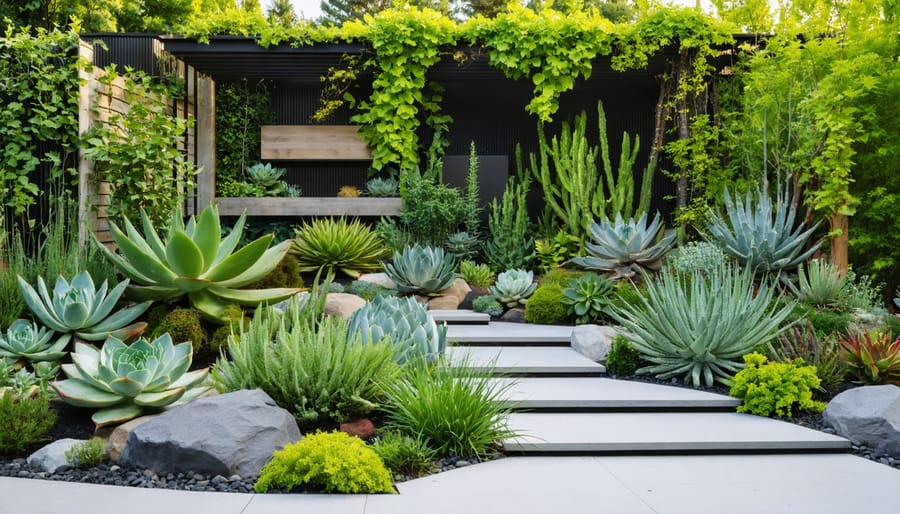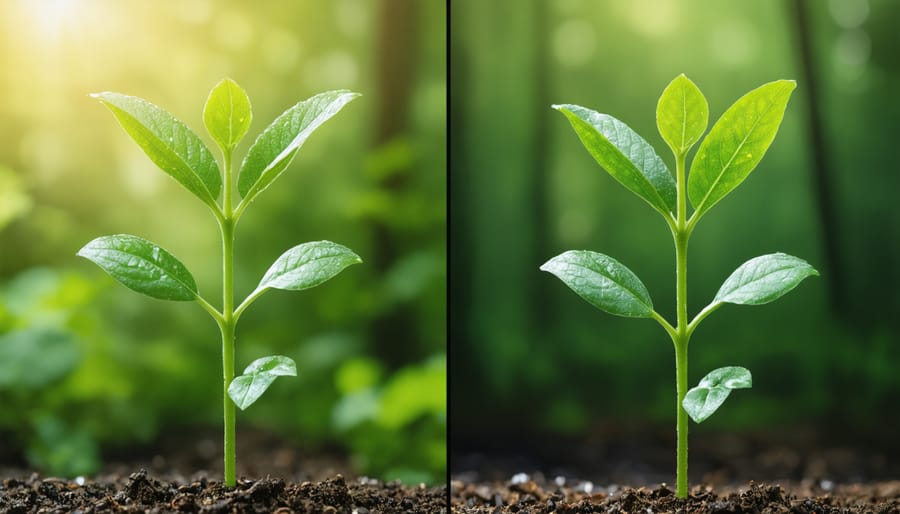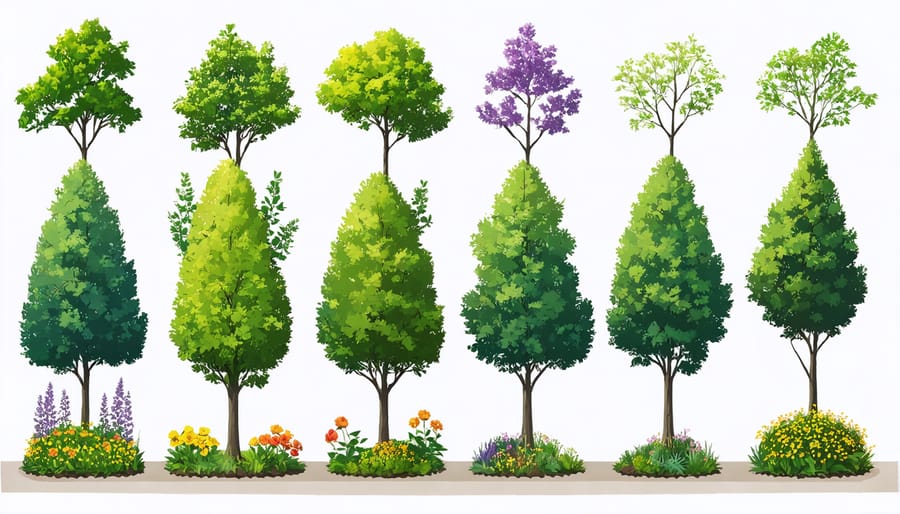
Smart Plants That Transform Your Outdoor Living Space
Discover the remarkable world of adaptive plants – nature’s resilient survivors that effortlessly transform your outdoor living space while demanding minimal care. These botanical champions thrive in challenging conditions, from drought-resistant succulents that flourish in arid zones to salt-tolerant coastal species that embrace ocean spray. Whether you’re dealing with harsh sunlight, poor soil, or limited water resources, adaptive plants offer practical solutions for creating sustainable, low-maintenance landscapes that evolve with changing environmental conditions. By selecting these naturally resilient varieties, you’ll not only reduce water consumption and maintenance time but also create dynamic outdoor spaces that showcase nature’s incredible ability to adapt and thrive. These smart plant choices prove that beautiful, sustainable landscaping doesn’t require constant attention – just strategic selection and thoughtful placement.
What Makes a Plant ‘Adaptive’ for Outdoor Living?
Climate Resilience
Adaptive plants showcase remarkable resilience when it comes to local weather patterns, making them perfect companions for creating a weather-ready living space. These hardy species naturally adjust their growth patterns and physical characteristics to match seasonal changes. During drought conditions, they might reduce leaf size or develop a waxy coating to conserve water. In colder weather, many adaptive plants can lower their freezing point by concentrating sugars in their cells, while others drop leaves to conserve energy.
Some varieties even modify their root systems, growing deeper during dry spells or creating more surface roots when moisture is abundant. This natural flexibility means less maintenance and worry for you, especially during extreme weather events. By selecting plants that already thrive in your local climate, you’re working with nature rather than against it, creating a more sustainable and resilient outdoor space that can weather whatever Mother Nature throws its way.

Space Efficiency
Adaptive plants are masters at making the most of available space, thanks to their remarkable growth patterns. These smart growers naturally adjust their form based on surrounding conditions, making them perfect for both compact urban gardens and sprawling landscapes. Vining varieties can grow vertically on trellises or walls, while spreading ground covers efficiently fill horizontal spaces without becoming invasive.
Many adaptive plants develop compact root systems that don’t compete aggressively with neighboring plants, allowing for denser planting arrangements. Some species even modify their leaf size and orientation to maximize sunlight exposure without overcrowding nearby plants. This space-efficient behavior means you can create fuller, more diverse gardens in smaller areas.
For container gardens and limited spaces, look for plants that naturally maintain proportional growth. These adaptive specimens will adjust their size to match their growing environment while maintaining their attractive form and essential functions.
Best Adaptive Plants for Different Outdoor Living Areas
Patio and Deck Plants
Transform your patio or deck into a vibrant outdoor living space with container-friendly adaptive plants that thrive in these entertainment areas. Succulents like jade plants and echeverias make excellent choices, requiring minimal water while providing year-round visual interest. Their compact growth habits and striking shapes create natural focal points in contemporary container arrangements.
Consider drought-resistant herbs such as rosemary, lavender, and thyme, which not only add beautiful textures but also provide fresh ingredients for outdoor cooking. These Mediterranean natives adapt well to container life and actually prefer the well-draining conditions that pots provide.
Ornamental grasses like fountain grass and blue fescue offer movement and sound, creating a dynamic atmosphere for your outdoor gatherings. These adaptive plants maintain their appeal through multiple seasons and require very little maintenance beyond occasional trimming.
For vertical interest, try growing climbing jasmine or clematis in containers with trellises. These adaptable climbers can create natural privacy screens while filling your entertainment space with delightful fragrances.
Don’t forget about colorful options like lantana and portulaca, which thrive in hot, sunny conditions typical of deck environments. These heat-loving plants produce continuous blooms throughout the season and bounce back quickly if you occasionally forget to water them.
Remember to choose containers with adequate drainage and use high-quality potting mix specifically formulated for container gardens to ensure your adaptive plants flourish in their designated spaces.

Privacy Screen Plants
Privacy screen plants offer an elegant, natural solution for creating boundaries while enhancing your outdoor space’s aesthetic appeal. These adaptive plants not only provide seclusion but also act as windbreakers and noise buffers, making them perfect for urban and suburban environments.
Fast-growing bamboo varieties are excellent choices for quick privacy solutions, reaching impressive heights within a single growing season. For a more traditional look, evergreen shrubs like Leyland Cypress and Green Giant Arborvitae provide year-round coverage and require minimal maintenance once established.
For smaller spaces or container gardens, consider columnar plants like Italian Cypress or Sky Pencil Holly. These vertical growers maximize privacy without taking up too much ground space. If you’re looking for flowering options, try Sweet Viburnum or Climbing Hydrangea, which combine privacy with seasonal blooms.
Layer different heights and textures for maximum effectiveness. Plant tall evergreens in the background, medium-height shrubs in the middle, and ornamental grasses in the foreground. This creates a natural-looking barrier that’s both functional and visually interesting.
Remember to consider your climate zone and available sunlight when selecting privacy plants. Most privacy screen plants adapt well to various conditions, but proper placement ensures optimal growth and longevity. Regular pruning and basic maintenance will keep your living fence looking neat while maintaining its protective qualities.
Design Tips for Incorporating Adaptive Plants
Seasonal Planning
Creating year-round visual interest with adaptive plants requires thoughtful planning across seasons. Start by selecting a mix of plants with different blooming periods, foliage types, and growth patterns. For spring, incorporate early bloomers like native wildflowers and flowering shrubs. Summer can showcase drought-resistant perennials with vibrant colors, while fall brings texture through ornamental grasses and plants with striking seed heads.
Don’t overlook winter interest – choose plants with architectural forms, interesting bark patterns, or evergreen foliage. Consider how your outdoor lighting design can highlight these features during darker months.
Layer your plantings with varying heights and depths, combining plants that peak at different times. Include both quick-establishing species for immediate impact and slower-growing varieties that will mature over time. This strategy ensures your space remains visually engaging throughout the year while maintaining the low-maintenance benefits of adaptive plants.
Remember to group plants with similar water needs together, making it easier to maintain proper irrigation as seasons change. This approach creates a dynamic landscape that evolves naturally with the changing seasons while remaining resilient and beautiful year-round.

Maintenance Zones
Organizing your adaptive plants into maintenance zones makes care routines more efficient and manageable. Group plants with similar water, sunlight, and care needs together to streamline your gardening tasks. For example, create a low-maintenance zone for drought-resistant plants that only need occasional watering, and a separate area for plants requiring more frequent attention.
Consider establishing three main zones: minimal care (weekly or less), moderate care (2-3 times weekly), and high care (daily attention). Place high-maintenance plants near your home’s entrance or frequently used paths for easy access. Position low-maintenance plants in harder-to-reach areas or along property boundaries.
Use smart irrigation systems to automate watering schedules for each zone. Install moisture sensors to optimize water usage and prevent over or under-watering. Keep maintenance tools and supplies stored near the zones where they’re most needed. This systematic approach not only saves time but also ensures each plant group receives appropriate care without unnecessary effort.
Remember to adjust your zones seasonally as plant needs change throughout the year. Document care routines for each zone to help maintain consistency and track plant performance over time.
Care and Maintenance Essentials
Caring for adaptive plants is surprisingly straightforward, making them perfect for busy homeowners and novice gardeners alike. The key to success lies in understanding their basic needs and establishing a simple maintenance routine.
Start by monitoring soil moisture levels weekly. While adaptive plants are generally drought-tolerant, they’ll need regular watering during their first growing season to establish strong root systems. After that, most species only require watering during extended dry spells.
Mulching is your best friend when it comes to maintaining adaptive plants. Apply a 2-3 inch layer of organic mulch around your plants in spring and fall. This helps retain moisture, suppress weeds, and regulate soil temperature. Just remember to keep mulch away from plant stems to prevent rot.
Pruning requirements are minimal, but an annual trim helps maintain shape and encourages healthy growth. Remove dead or damaged branches whenever you spot them, and do major pruning in early spring before new growth starts.
Fertilization needs are typically low for adaptive plants. A light application of balanced, slow-release fertilizer in spring is usually sufficient. Over-fertilizing can actually harm these naturally resilient plants and make them less drought-tolerant.
Watch for signs of stress like yellowing leaves or unusual growth patterns. While adaptive plants are generally disease-resistant, catching potential issues early ensures your outdoor space stays healthy and vibrant year-round.
Adaptive plants offer an incredible opportunity to create stunning, sustainable outdoor spaces that thrive with minimal effort. From drought-resistant succulents to shade-loving ferns, these resilient plants provide solutions for every challenging environment. By choosing the right adaptive plants for your space, you can significantly reduce maintenance time, water consumption, and overall gardening costs while still enjoying a beautiful landscape. Whether you’re a busy homeowner, a design professional, or simply looking to make your outdoor space more sustainable, now is the perfect time to start incorporating adaptive plants into your garden. Take the first step by selecting a few hardy species that match your local climate and specific conditions. With proper planning and placement, you’ll soon discover the joy of watching your low-maintenance garden flourish season after season.
